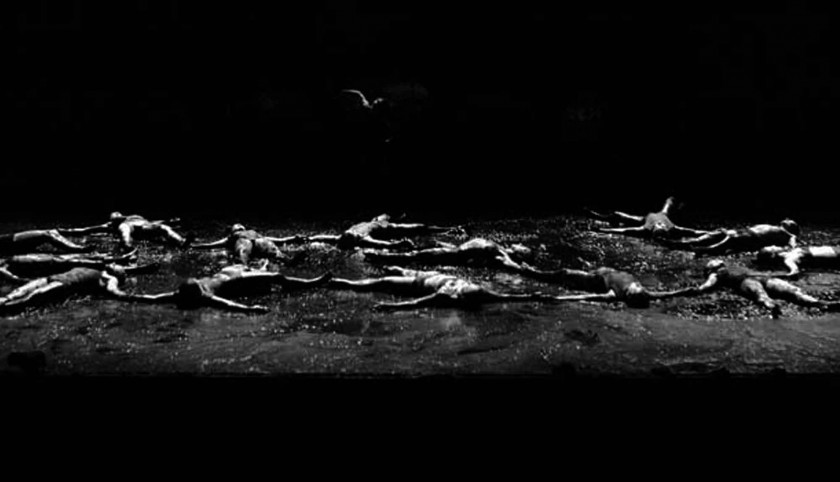Idee und Choreografie: Ismael Ivo
Musik: Igor Stravinskij “The Rite of Spring”, Andreas Bick “The Waste Land”
Produziert von der Kunstbiennale Venedig in Zusammenarbeit mit dem Goethe-Institut Mailand
Premiere: 20. Juni 2009
Die erste Saison des Arsenale della Danza der Kunstbiennale Venedig schließt mit einer Choreografie ihres Leiters Ismael Ivo. The Waste Land beruht auf einem der Meisterwerke des frühen 20. Jahrhunderts, Igor Strawinskys „Le Sacre du Printemps“. In der Choreografie ist die Beziehung des Menschen zu seiner natürlichen Umwelt aus dem Lot geraten. „Der Schrei der Erde und seine Zerstörung“ werden hier von der Musik Strawinskys begleitet und den Kompositionen aus natürlichen Eis- und Feuerklängen von Andreas Bick gegenüber gestellt. Die Feier des Frühlings und das barbarische Opferritual verlangen von den Tänzern, sich auf die Suche nach einem Neuanfang in der Beziehung zur bedrohten Natur zu machen.
The Waste Land
Idea and Choreography: Ismael Ivo
Music: Igor Stravinskij “The Rite of Spring”, Andreas Bick “The Waste Land”
Produced by La Biennale di Venezia with the collaboration of Goethe Institut Mailand
Premiere: 20 June 2009
The first season of the Arsenale della Danza concludes by bringing to focus teaching and practice under the Masters invited over the past few months, with the creation of a performance under the director and choreograph, Ismael Ivo. The 15 dancers of the Arsenale della Danza, young performers aged between 22 and 30 from Italy, Switzerland, Venezuela, Turkey and Japan will thus have the chance to test their skills and creativity in a truly professional setting. From this process arises The Waste Land, based on a masterpiece of the early 20th century, Stravinsky’s Rite of Spring, rendered immortal by Nijinsky, questioning our relationship with our environments in a world increasingly at risk. The celebration of the rite, the return of spring, the joy of the dance all seek a new horizon of meaning. Similarly, the music sees the introduction alongside of the sound-based experiments of the German composer, Andreas Blick, which reproduce noisy natural events by sampling or recording, “the scream of the earth and its disintegration” (I. Ivo), which will accompany Stravinsky’s Rite, which already expressed a barbaric, primitive work, with all its explosion of senses and violence. This is a creation that seeks the degree zero of movement and of the relationship with the earth to spur the dancers to find a new beginning for today’s tormented world.


